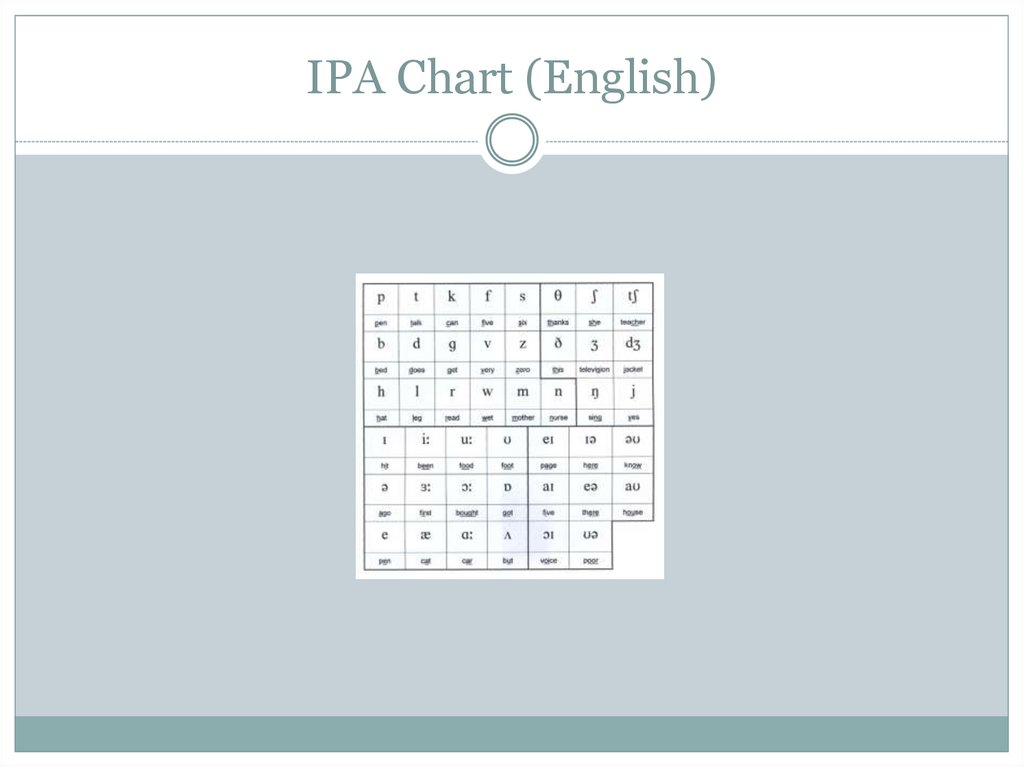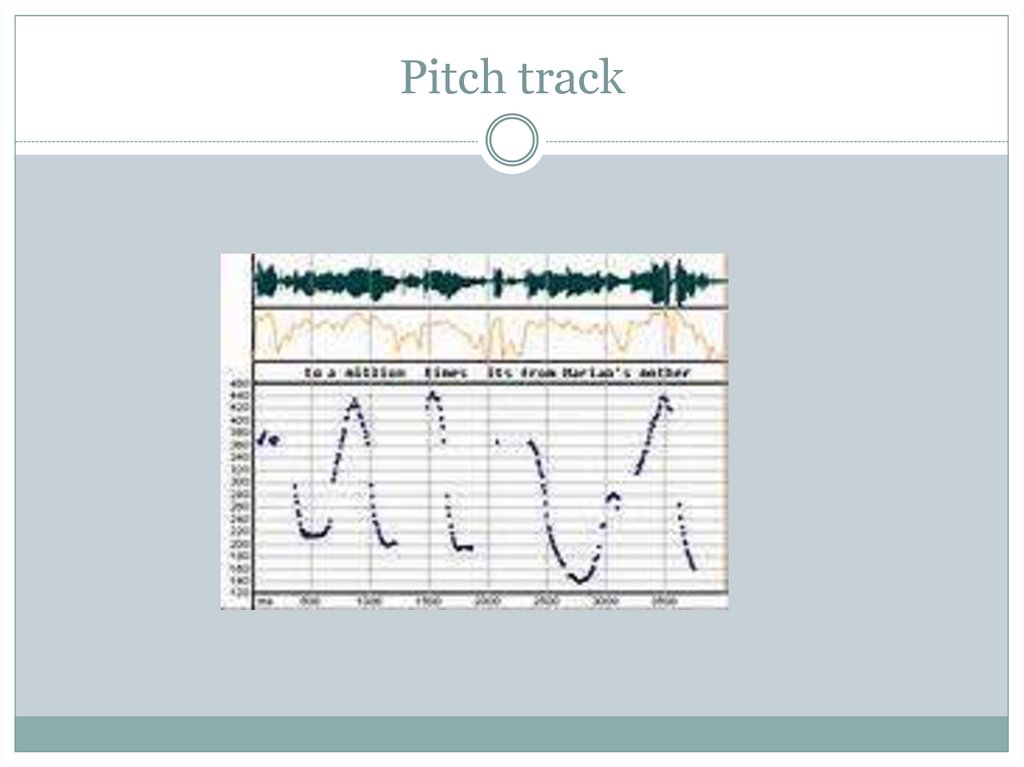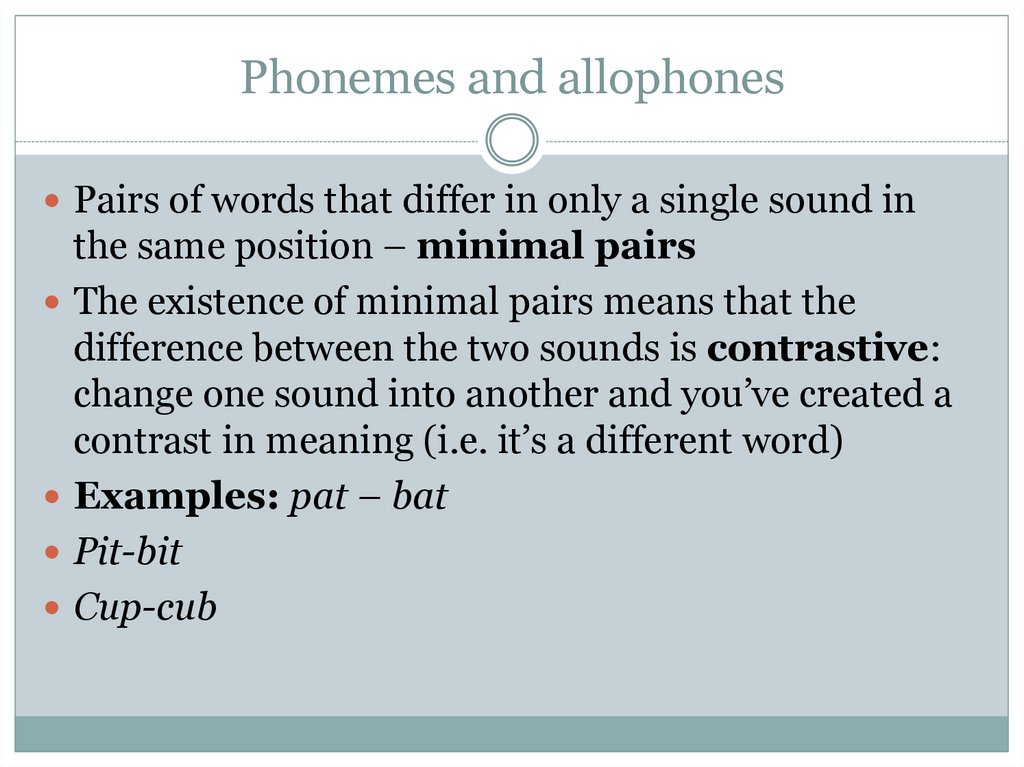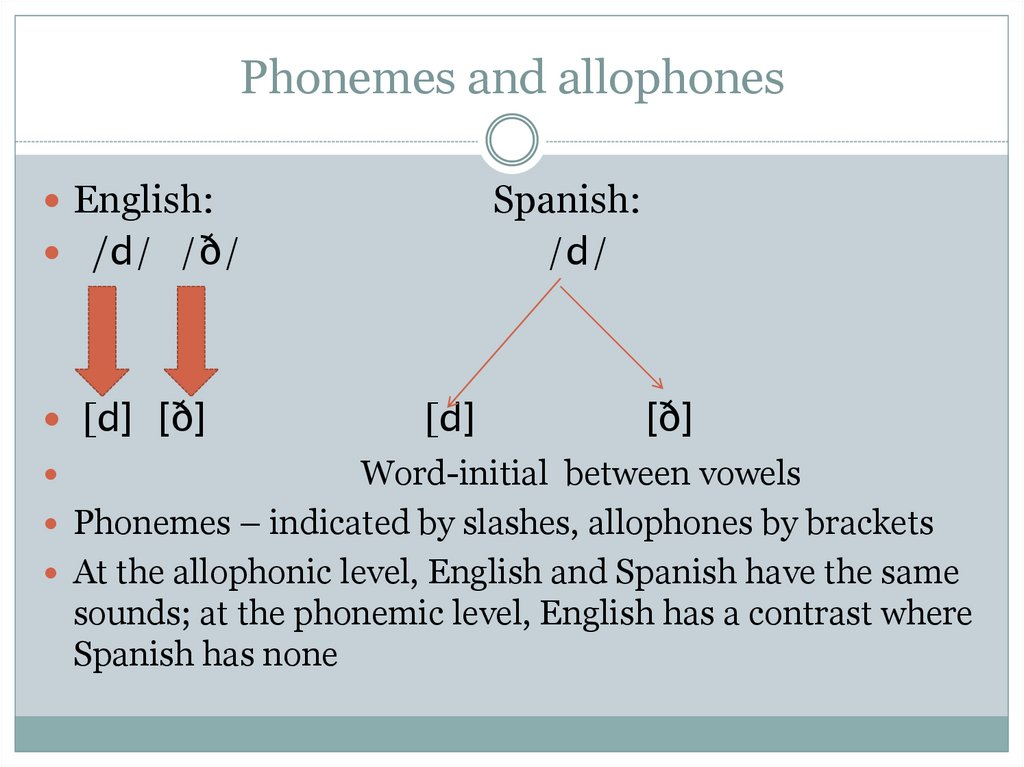Похожие презентации:
The sounds of language. Phonetics and phonology
1. The sounds of language
PHONETICS AND PHONOLOGY2. Study of speech sounds
Which part of linguistics studies speech sounds(phones)?
Phonetics
3. Phonetics
How are speech sounds made?How does sound travel through the air?
How is it registered by the ears?
How can we measure speech?
4. Phonetics
Articulatory phonetics: Place and manner ofarticulation
Acoustic phonetics
IPA transcription
Suprasegmentals
5. Introduction
What is a sound?How are sounds produced?
6. The vocal tract
The sound: vibrating airSpeaking means using your vocal tract (lungs,
trachea, larynx, mouth and nose) to get air moving
and vibrating
Most speech sounds made with air exiting the lungs:
speech begins with breath: egressive pulmonic
sounds (most languages)
(Ingressive pulmonic sounds: clicks, implosives)
7. Vocal tract
8. The vocal tract
At the top of the trachea is larynx (Adam’s apple)Inside the larynx there are two folds of soft tissue –
vocal chords
If the vocal chords are held in the correct position
with the correct tension, the air flowing out of the
trachea causes them to flap open and closed very
quickly (200 times per second)
9. The vocal tract
Find your larynx and hum a tune: muscles attachedto the cartilages of the larynx allow you to adjust the
tension of vocal chords, adjusting the rate of
vibration and raising or lowering the pitch
The faster the vibration, the higher the pitch of the
voice
Other muscles allow you to draw the folds apart so
that no vibration occurs
10. The vocal tract
Just above the larynx, at the base of the tongue, isthe epiglottis – a muscular structure that folds down
over the larynx when you swallow to prevent food
from going down into the lungs
The payoff for the risk of a larynx located low in the
throat is an open area at the back of the mouth, the
pharynx
The pharynx allows the tongue front and back
movement
11. The vocal tract
Other mammals, including nonhuman primates,have the larynx high up at the back of the mouth,
connected to the nasal passages
Because they have no pharynx, chimps could never
learn to talk
Inside the mouth: active articulators and passive
articulators
12. The vocal tract
Active articulators: lips and the tonguePassive articulators : alveolar ridge, the postalveolar
region, the hard palate, the soft palate (velum)
13. Articulation
Sounds produced with vocal fold vibration – voiced,those produced without vibration – voiceless
(Place your finger on your larynx and produce
prolonged [z], then produce [s])
14. Articulation
For some sounds, the vocal folds are held apart farenough and long enough to produce an extra “puff of
air” to exit the mouth (pop, pill) – aspiration –
(hold your fingertips in front of your lips)
If the velum is open, so that air flows into the nose,
the sound is nasal: [m, n, ng]; if the velum is closed,
the sound is oral
15. Consonants
Obstruction of the air flow: consonantsThere are different ways of stopping the air flow,
depending on which part(s) of your vocal tract you
use to stop it: the place of articulation, and on the
manner in which you stop it: manner of
articulation
Focusing on places and manners of articulation gives
us the phonetic features of sounds we make in
producing spoken language
16. Place of articulation (English consonants) :
Bilabial: [p], [b], [m]Labiodental: [f], [v]
Dental [ð], [θ]
Alveolar: [t], [d], [n], [l], [s], [z]
Palatoalveolar: [∫] , [з] [t∫] , [dз]
Palatal: /j/
Velar: /k/, /g/, [ŋ]
Labiovelar: /w/
Laryngeal: /h/
17. Manner of articulation
Place of articulation combines with other featuresinvolving how the sounds are produced
18. Stops/ Plosives
Air flow is completely stopped:[ p], [t], [k] : voiceless (also: plosives); [b], [d], [g] :
voiced ; [m] – nasal stop
19. Approximants
Air is partially obstructed as it flows through thevocal tract: w, j, r, l
20. Fricatives
The air flow is never completely obstructed:[s], [z], [f], [v]
21. Affricates
A sound begins as a plosive and ends as a fricative:[t∫] , [dз]
22. Manner of articulation
Stops (also: plosives) : [ p], [t], [k] : voiceless; [b],[d], [g] : voiced ; [m] – nasal stop
Fricatives: [s], [z], [f], [v]
Affricate (stop+fricative): [t∫] , [dз]
Approximant : [j], [w], [l], [r]
23. Place of articulation: Vowels
Vowels – an open vocal tract, so the tongue does nottouch the upper surface of the vocal tract at any
particular place
Vowels – described in terms of the ways in which the
tongue body and lips move
Classified by the height of the tongue body, whether
it is bunched toward the front or back of the mouth,
and whether the lips are rounded
24. English vowels
25. Transcription
In 1888 the International Phonetic Associationtackled the problem of how to precisely describe any
sound the members might encounter in their efforts
to describe all languages of the world
They published symbols for the new alphabet –
International Phonetic Alphabet (IPA) based on two
principles:
The alphabet would be universal
The alphabet would be unambiguous (1 sound 1
symbol)
26.
27. IPA Chart (English)
28. Suprasegmentals
Speaking involves stringing sounds together intolarger units
Aspects of speech that influence stretches of sound
larger than a single segment - suprasegmentals
29. Suprasegmentals
Length,tone,
intonation,
syllable structure
stress
30. Acoustic phonetics
In order to understand how people use sound tocommunicate, we must understand how articulators
turn air movements into sound, what happens to
sound after it passes through the lips, how it travels
through the air, and how it impacts on the ears and
the brain of those who listen
31. Sound waves
Articulation is about getting air to moveMoving patterns of vibration – sound waves
When the sound waves reach our ears they set the
eardrum vibrating according to the same pattern
Inside the ear, the vibrations set off nerve impulses,
which are interpreted by our brain as sound
32. Hearing
33. Measuring speech
Speech analysis done by computerMicrophones convert the vibration of the membrane
into variations in electrical current
Once represented and stored in a digital format,
sound files can be matematically analyzed to
separate out the diferent frequencies
34. Waveform for the utterance “not got room for”
35. Pitch track
36. Spectrogram
The computer can further analyze the sound wave toseparate its component frequencies
Instead of a single line graph, we see a complicated
pattern of the many frequencies present in each
sound
37. Spectrogram
Each vowel has a pattern of two or three mostprominent frequencies, which are called formants,
above the fundamental frequency of the speaker’s
vocal folds
Because every person’s vocal tract size and shape is
unique, every person’s formant structure is unique
too. We recognize familiar voices, regardless of what
they are saying and in the hands of an expert, a
spectrographic voice print is almost as unique as a
fingerprint
38. Spectrogram
39. Sounds
Every sound – composed of smaller components thatcan be combined in different ways to make other
sounds, and each component offers a typically binary
opposition:
voiced or voiceless,
nasal or oral,
open or closed,
front or back etc.
40. Phonemes
Related to each other: some sets of sounds differ onlyby changing one parametar, others in several
parameters
These parameters – distinctive features –
important in describing sound patterns within a
linguistic system
41. Phonology
When we turn from analyzing physical aspects ofspeech sounds to studying their cognitive
organization, we move from phonetics to phonology
42. Distinctive features
Phonemes of all languages may be described in termsof differing subsets of distinctive features
43. Phonemes and allophones
Pairs of words that differ in only a single sound inthe same position – minimal pairs
The existence of minimal pairs means that the
difference between the two sounds is contrastive:
change one sound into another and you’ve created a
contrast in meaning (i.e. it’s a different word)
Examples: pat – bat
Pit-bit
Cup-cub
44. Phonemes and allophones
Phonemes - underlying abstract mentalrepresentations that we hold in our linguistic
repertoire of meaningful sounds
allophones - the actual soundings of those
representations
45. Phonemes and allophones
When two sounds form minimal pairs (i.e., theirdistribution is unpredictable and contrastive), those
sounds represent different phonemes
When two sounds are in complementary distribution
(i.e. their distribution is predictable and noncontrastive), the two sounds are allophones of the
same phoneme; in English [d] and [ð] – different
phonemes; in Spanish [d] and [ð] – allophones of the
same phoneme
46. Phonemes and allophones
English:Spanish:
/d/
/d/ /ð/
[d] [ð]
[d]
[ð]
Word-initial between vowels
Phonemes – indicated by slashes, allophones by brackets
At the allophonic level, English and Spanish have the same
sounds; at the phonemic level, English has a contrast where
Spanish has none
47. Phonemes and allophones
Differences in phonemic and allophonic distributionpose significant problems for language learners: a
native speaker of Spanish learning English will have
trouble with the distinction between den and then
48. Phonological theory
Phonologists don’t want to know just “What is theinventory of sounds in Polish” but “What is the
inventory of sounds in any language?”
They want to know not just “How are Russian and
Ukrainian different?” but “How different can
languages be?”
Distinctive feature theory aims to encode all the
phonetic dimensions that languages have available to
encode contrasts and natural classes
















































 Английский язык
Английский язык








